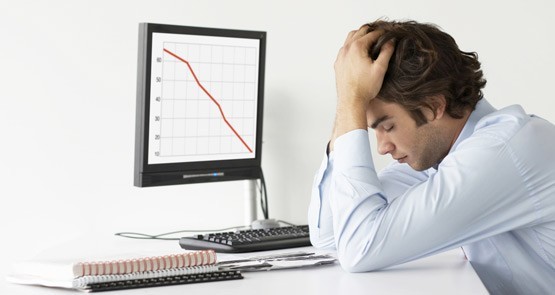
Yellen cools hotheads. US Federal Reserve chair Janet Yellen fronted the US House of Reps overnight (it’s the Senate tonight), and she didn’t back away from extra rate hikes down the track. She also told the committee that she doesn’t expect the Fed to reverse course and cut interest rates, though the central bank is “watching very carefully” the turmoil in global financial markets. That helped US markets to steady and rise — except for oil, where the optimists calling a rebound (the heads of Shell and BP, for instance) were drowned out by the realists, such as the International Energy Agency and S&P, which warned that worse lies ahead for oil, with prices to remain lower for much longer thanks to rising over production. — Glenn Dyer
More market madness. If the Japanese economy is stuttering and the Bank of Japan’s negative interest rate regime is an act of desperation, why has the yen surged to its highest level since late 2014 (thereby hurting the economy and vital exports, Japan’s lifeblood)? The US dollar has weakened against the yen and the euro since the Fed’s rate rise when it should have really continued rising after the initial jump in the wake of the Fed increase. Yellen’s comments overnight helped calm markets, and Wall Street was heading for a rise this morning until weakness in Disney and IBM shares spread to the rest of the market, sending the Dow down 100 points, but leaving the S&P 500 flat and the Nasdaq a touch higher.
And then there’s the Aussie dollar — it has remained resolutely around 70 US cents as the weakness in the greenback has been offset by the strength of the euro and the yen. And yet the Aussie economy isn’t a basket case, no matter what you might read or hear from the usual cast of shills and galahs in the economic pet shop. Look at the data flow so far in 2016 and building approvals, retail sales, lending data, jobs, car sales, business and consumer confidence and business conditions are all solid and showing no sign of an impending slowdown or worse. The Australian stock markets fell into bear territory yesterday (a fall of 20% from its most recent peak), but that is totally at odds with what is happening in the economy. — Glenn Dyer
US buybacks boom. But the US economy and markets are more problematic because of the age of the recovery in the economy, the slide in oil prices and the strength of the dollar. This morning three Wall Street giants companies acknowledged the growing uncertainty by trotting out US$25 billion in share buybacks. Cisco reported a stronger-than-expected profit and sales performance but found it necessary to boost its share buyback by $15 billion. Cisco has been borrowing billions to pay for its buybacks in recent years (that’s a tax deduction for the cost of the loans, low as they are at the moment). Cisco also trotted out a higher dividend. Time Warner took a similar course, trotting out a big dividend boost and a US$5 billion buyback over the next year. It didn’t help the shares and they fell 5% (a good buy tomorrow?). But the most interesting move came from Amazon, which dropped out a $5 billion buyback of its own — a week or two after revealing quarterly results, which didn’t set the world on fire but were solid and encouraging, especially its cloud computing business.
The latest buyback, which doesn’t have an expiry date, replaced a buyback started in 2010 — so it hasn’t been a big priority and the shares have risen more than 170% in that time (so no real need for support). But it is a different story in 2016 — the shares are down 26% so far this year, while the S&P 500 is “only” down 11%. The increased buyback from Amazon, one of the premier growth stocks of the past 40 years in the US tells has just how worried many American managements now are about the outlook. 21st Century Fox spent the best part of US$3.2 billion on its buyback in the six months to December — but its shares fell and are down 18%. — Glenn Dyer







I’m reminded of a popular ironic song from the 1940s saying “Oh the Country’s in the very best of hands”.
It wasn’t, of course, referring solely to elected Politicians either.